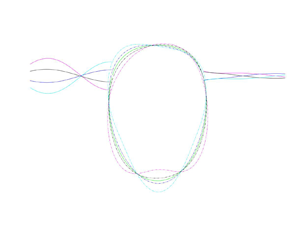Article contents
Hydrodynamic performance of a floating fluid-filled membrane breakwater: experimental and numerical study
Published online by Cambridge University Press: 11 December 2024
Abstract

Floating fluid-filled membrane breakwater (FFMB) is a temporary structure that can attenuate waves in the deep sea. In this paper the hydrodynamic performance of the FFMB is analysed by using the eigenfunction expansion boundary element method (EEBEM) and physical model experiments. A general motion equation is derived that considers both the dynamic tension and curvature of the membrane. Moreover, an integral expression for the dynamic tension is provided. On this basis, a linear model for solving wave–membrane interaction is established through the EEBEM. Newly designed physical experiments are performed to verify the model and elucidate the nonlinear characteristics of the FFMB. Following verification of the model, this paper investigates the effects of various structural parameters of the FFMB on the wave transmission coefficient, reflection coefficient, horizontal wave force, vertical wave force and dynamic tension. Furthermore, the interrelationship between the structural resonant response and the hydrodynamic performance is elucidated, and the optimal density and filling ratio of the FFMB for engineering applications are proposed. The results demonstrate that the numerical and experimental results are in good agreement, indicating that the model and the motion equation are both practical and highly accurate. By optimizing the structural parameters, the FFMB is capable of effectively attenuating waves within a specific frequency band, while minimizing the wave force.
Information
- Type
- JFM Papers
- Information
- Copyright
- © The Author(s), 2024. Published by Cambridge University Press
References
- 2
- Cited by


